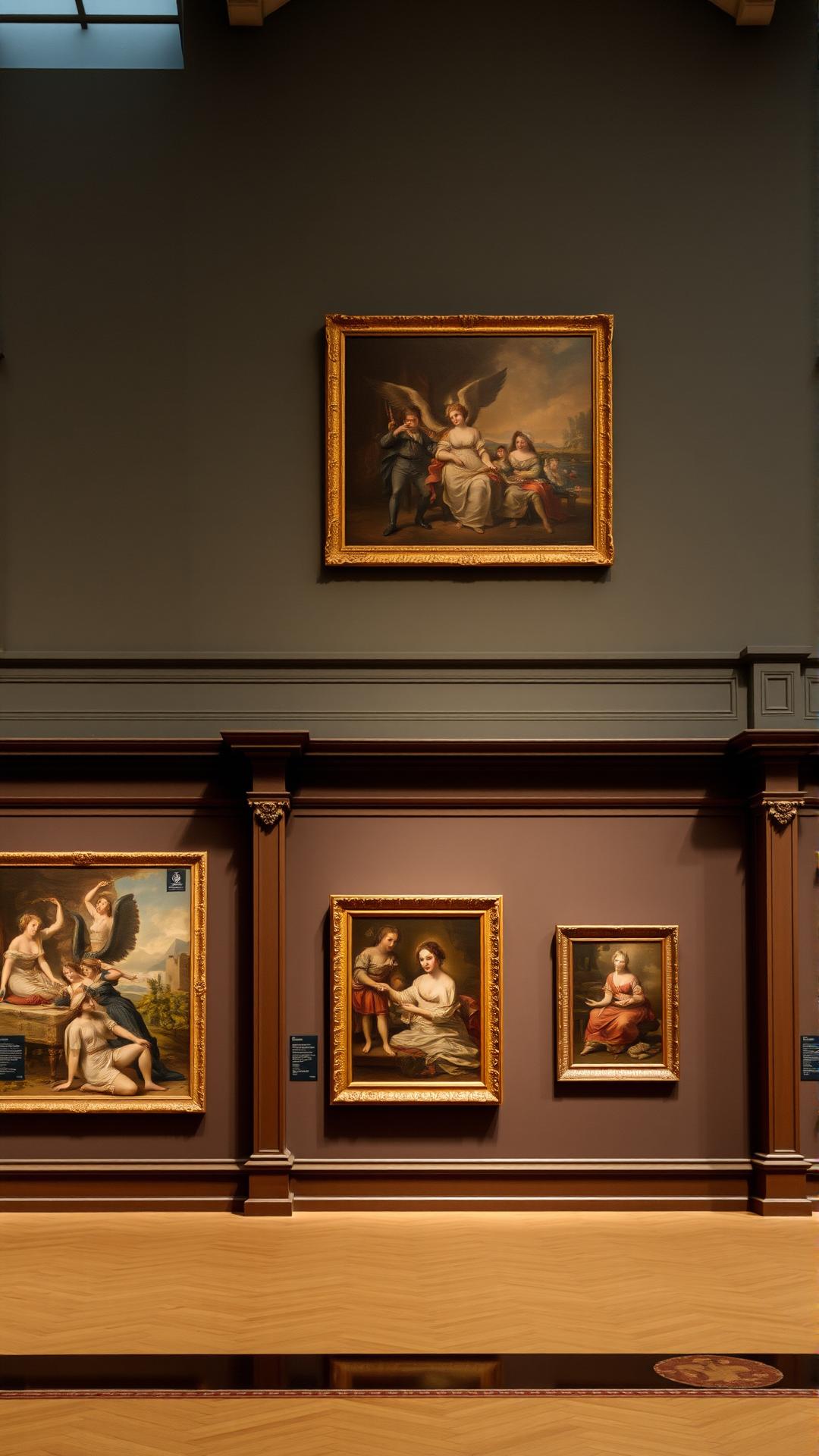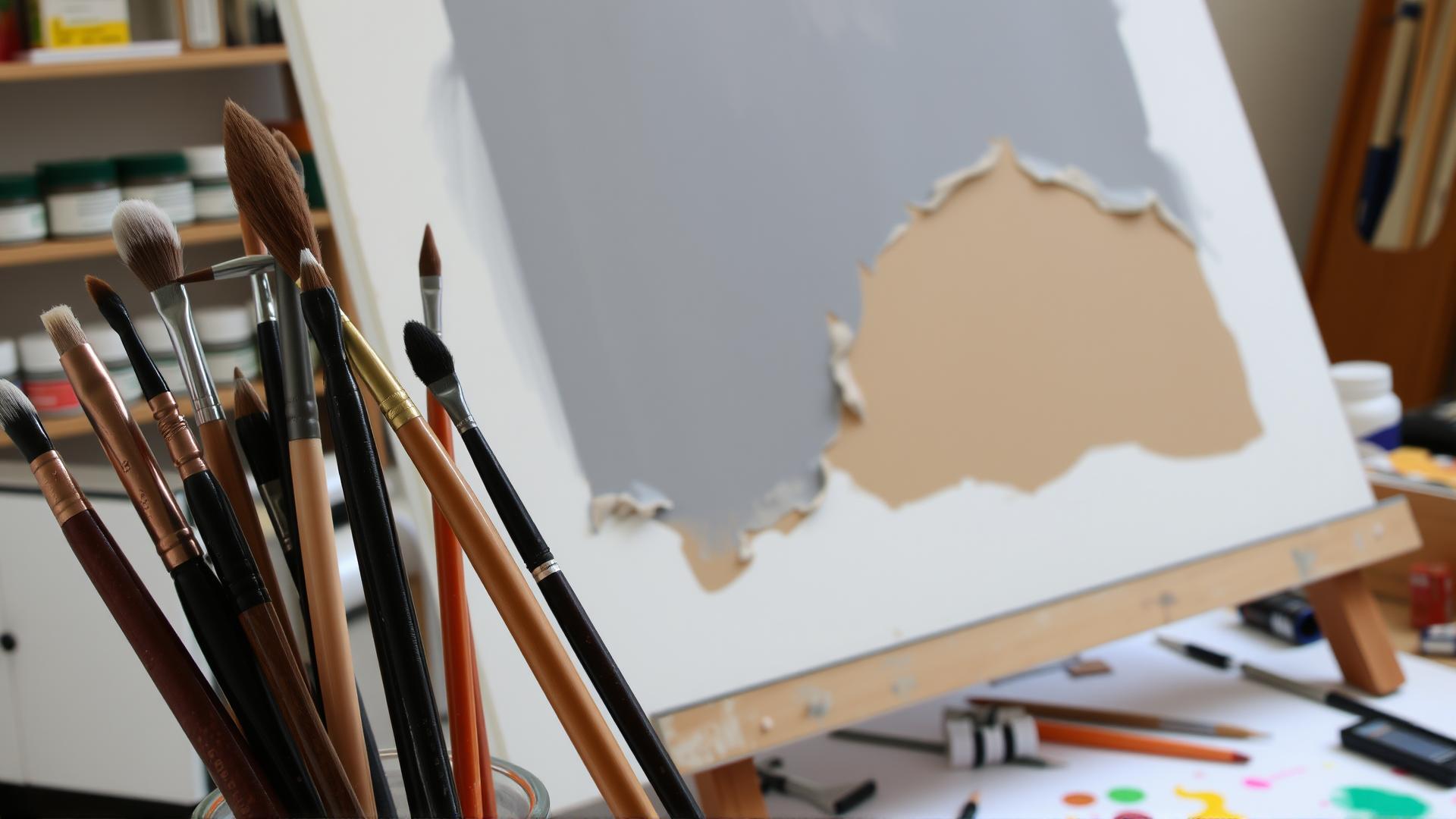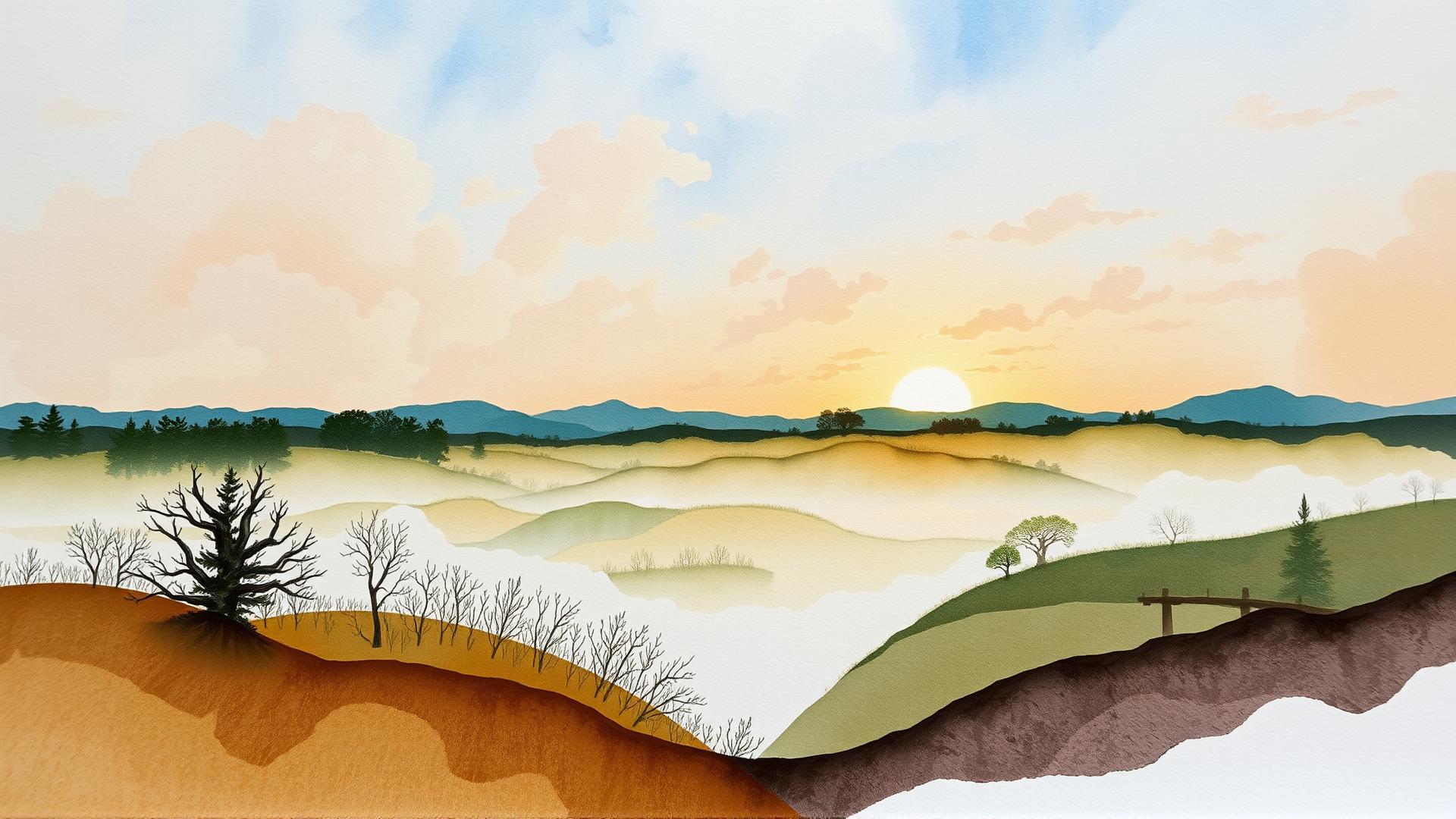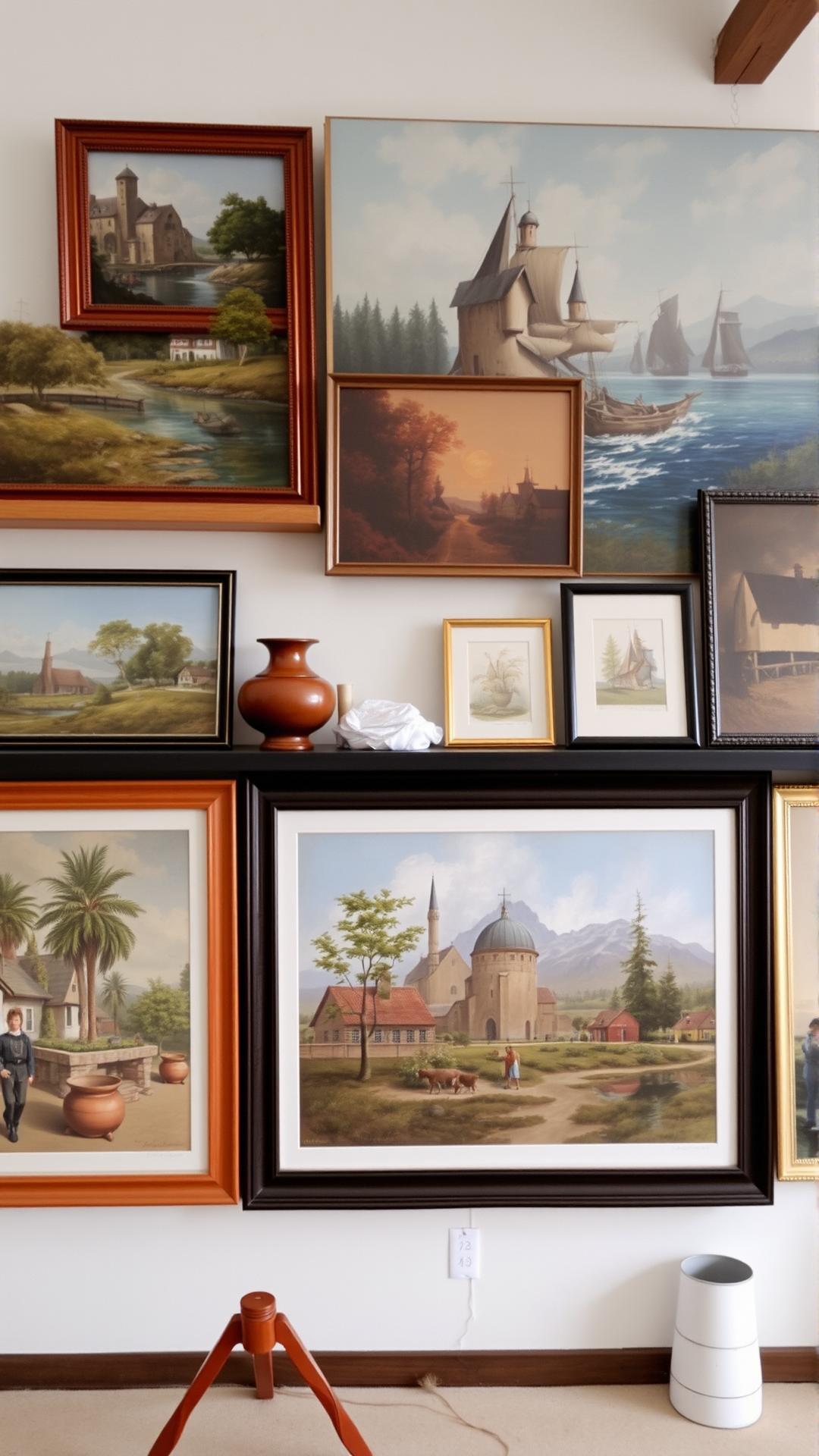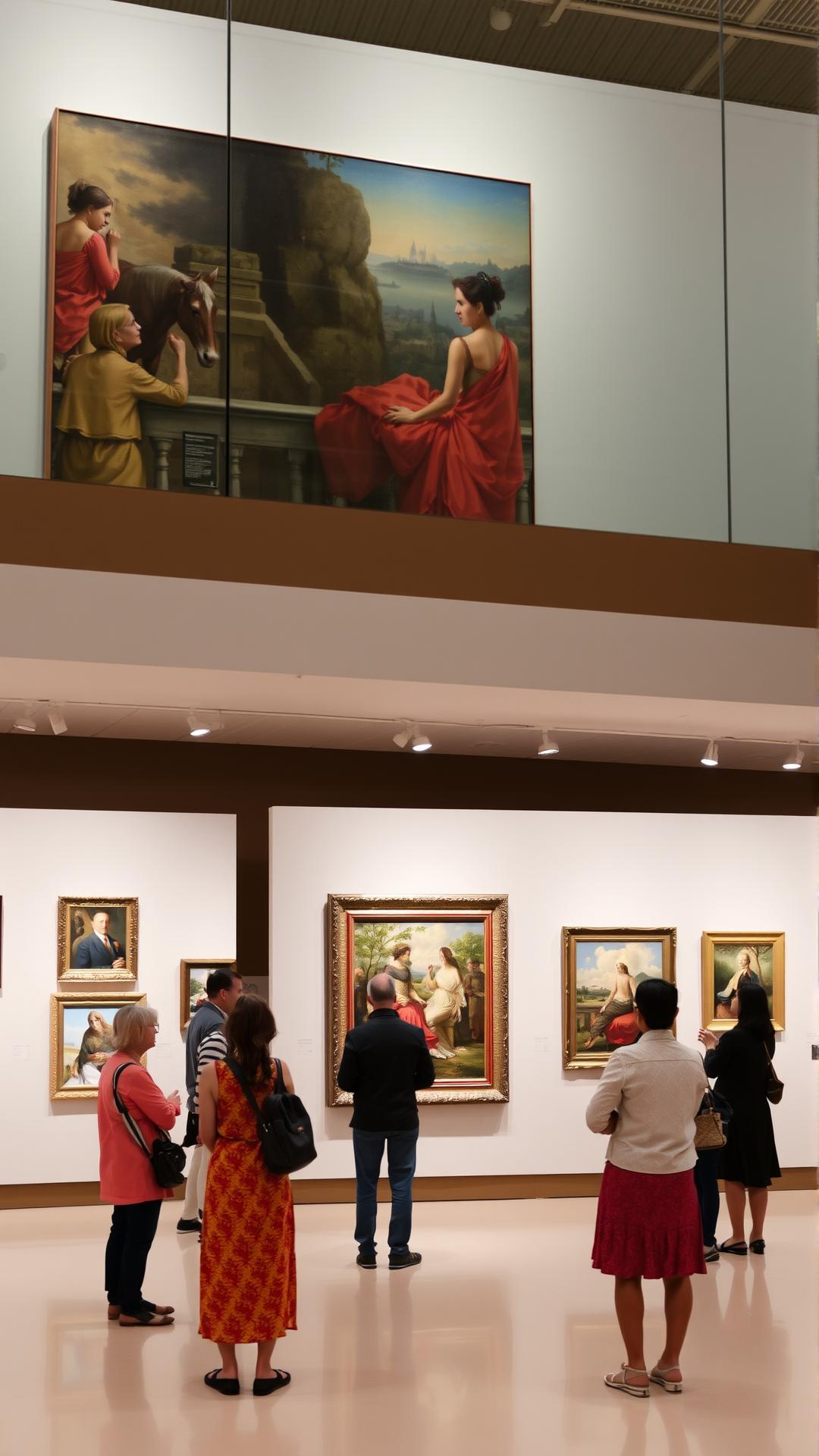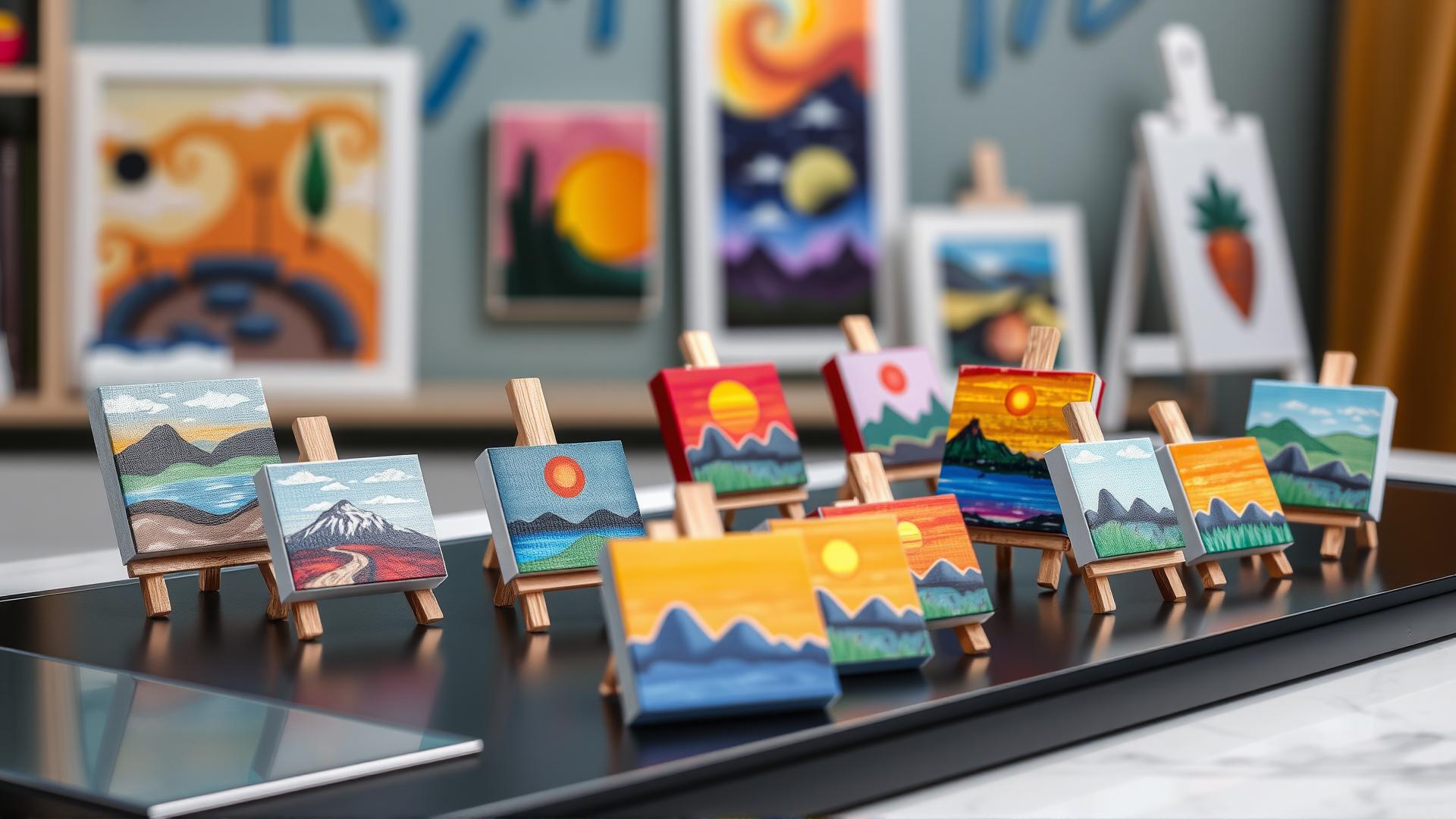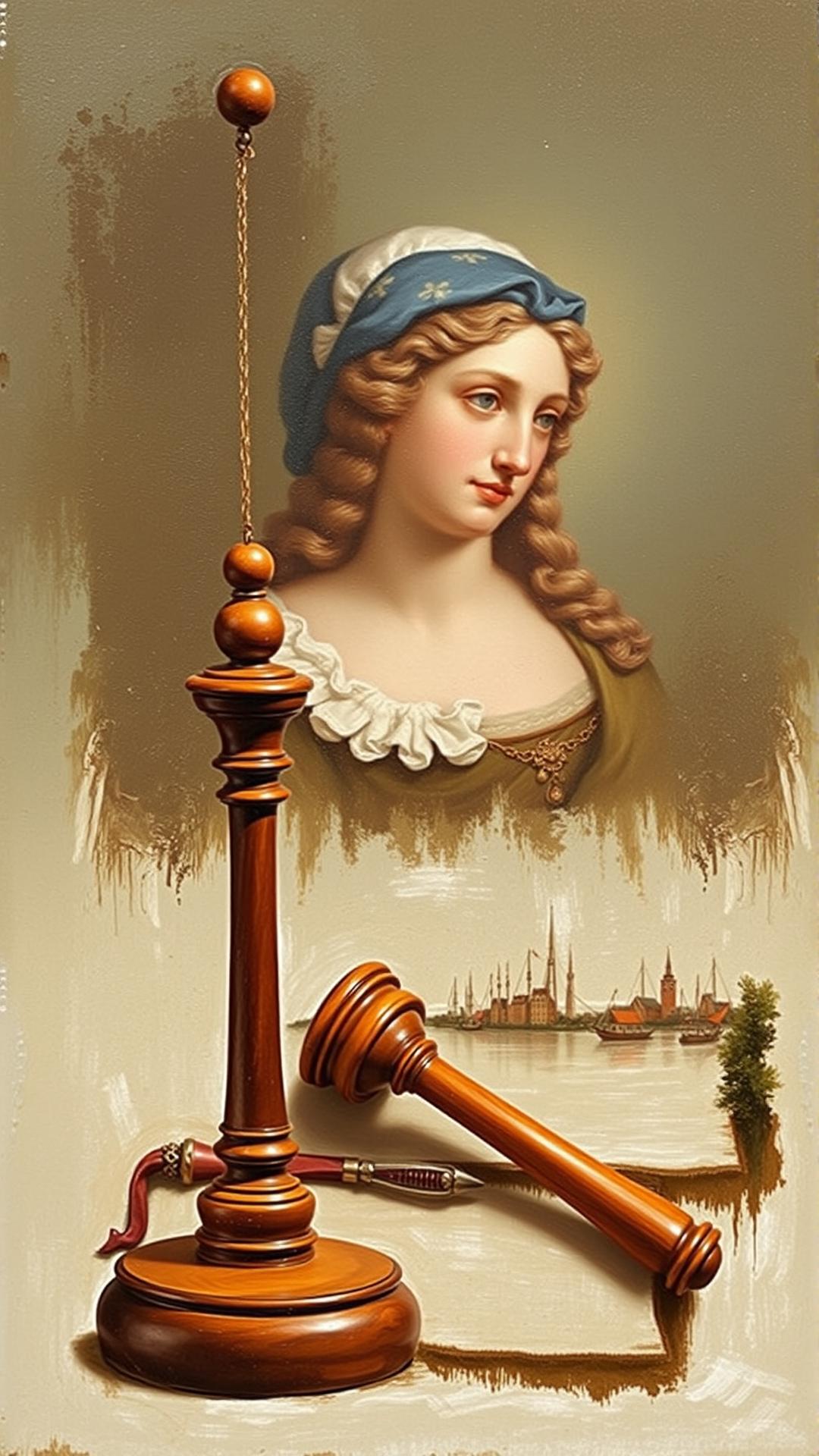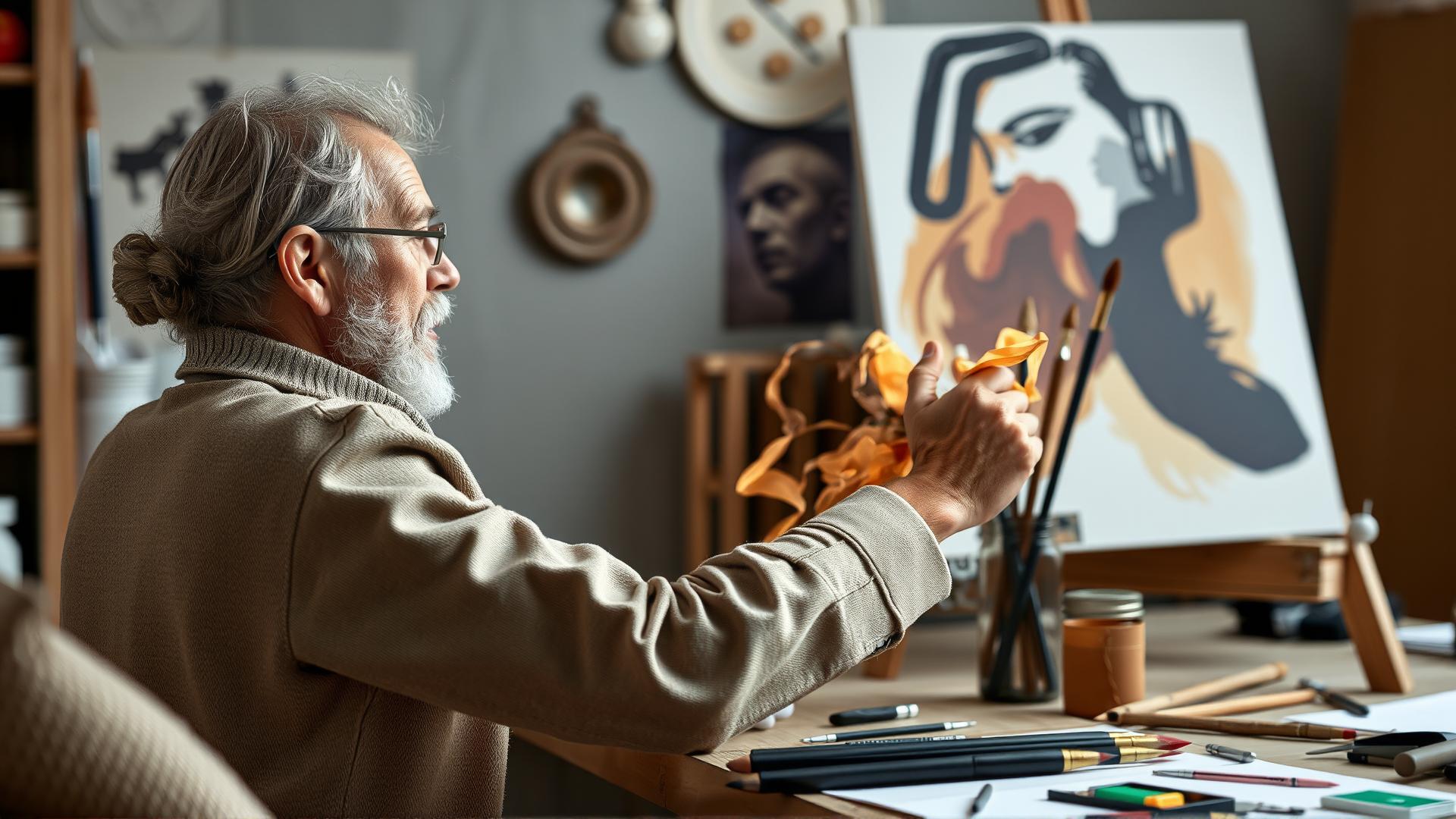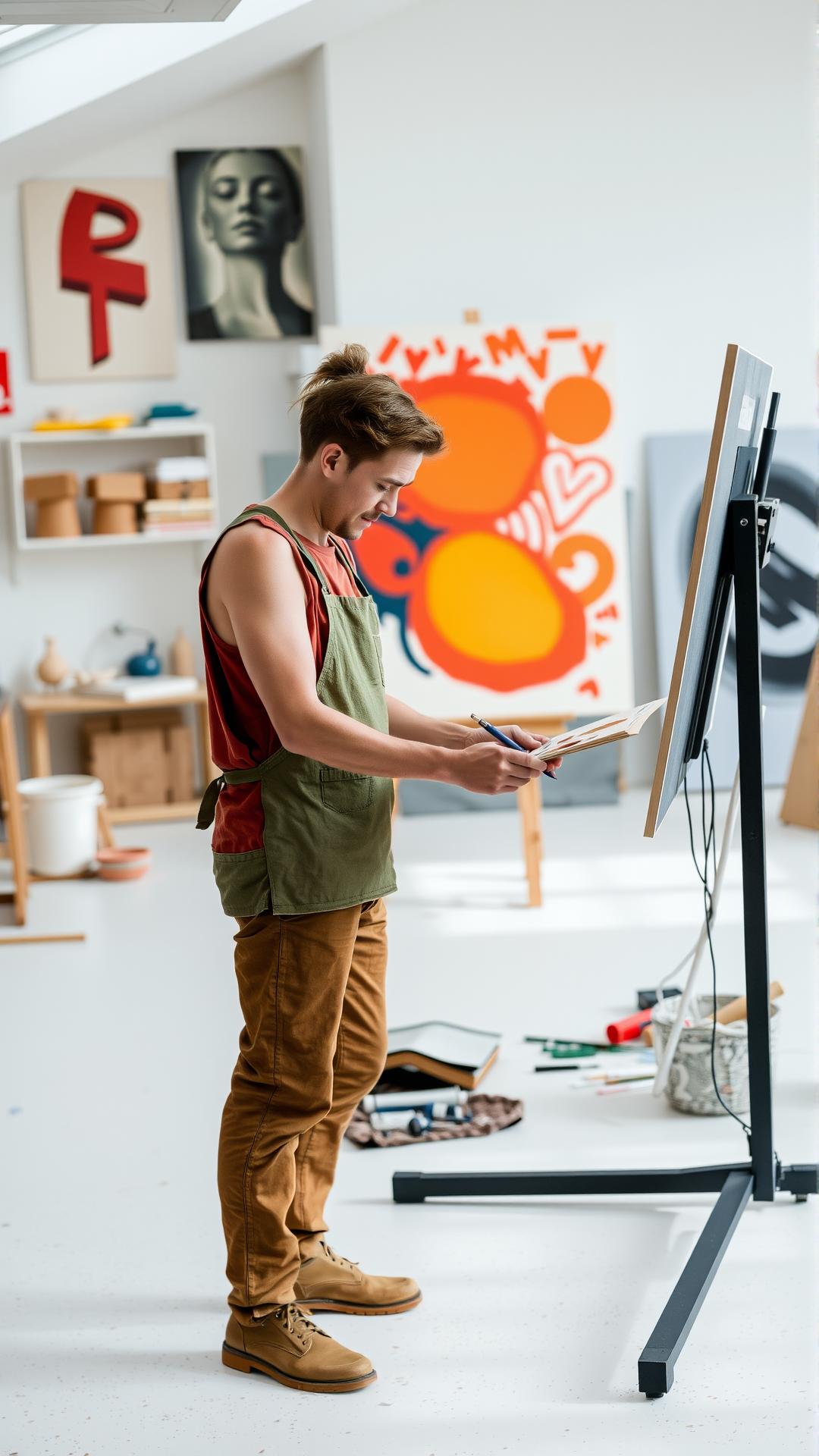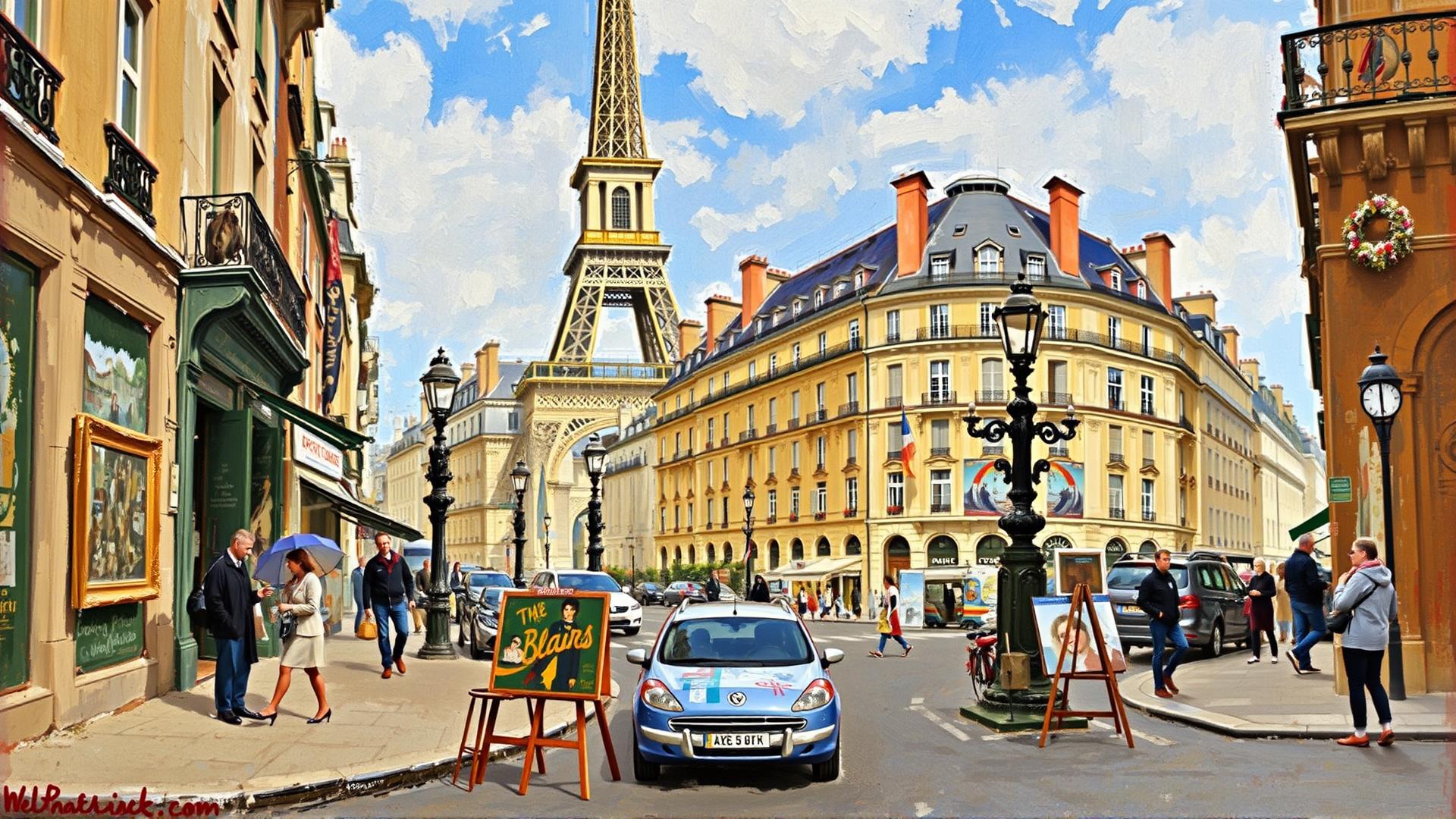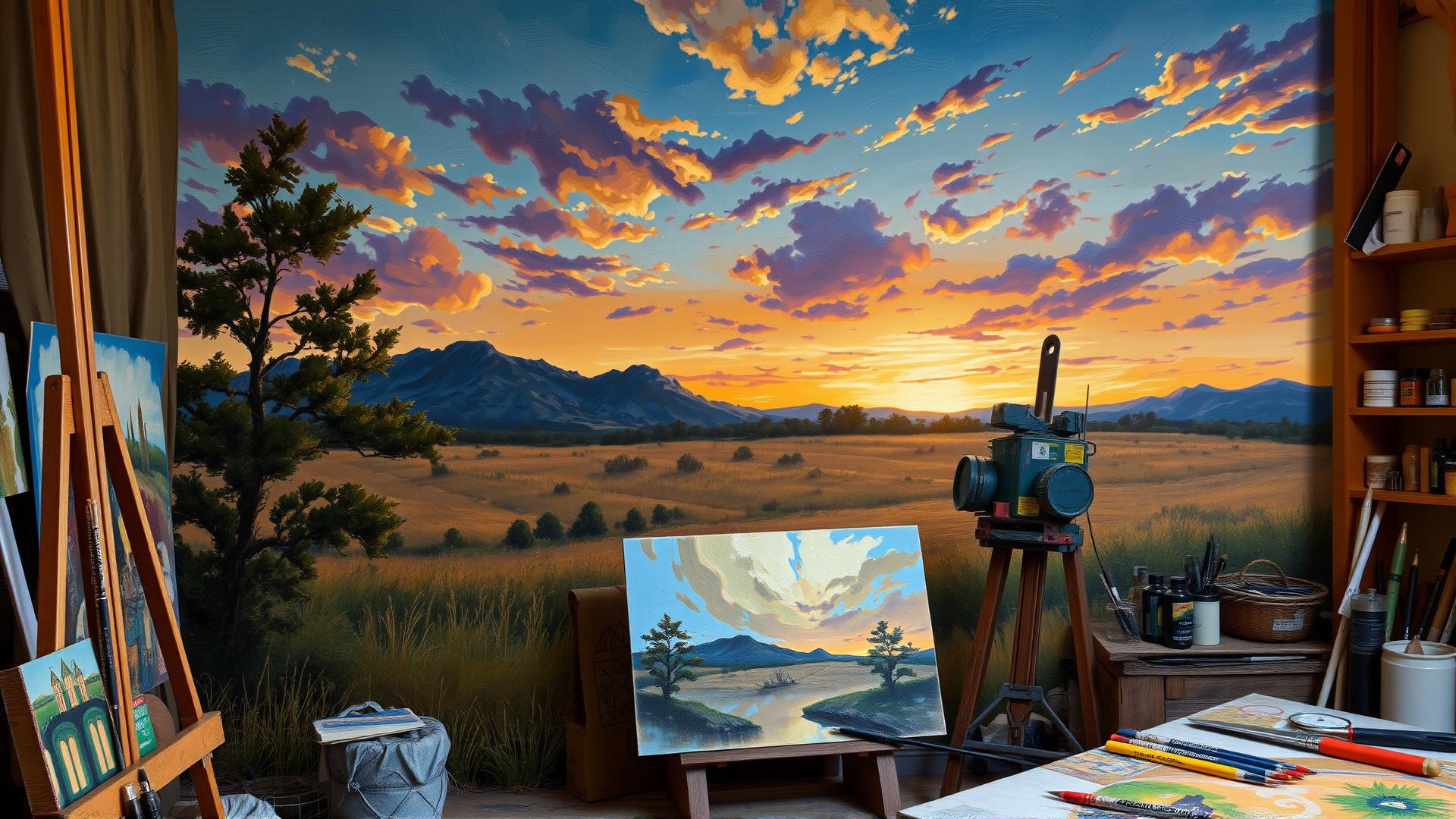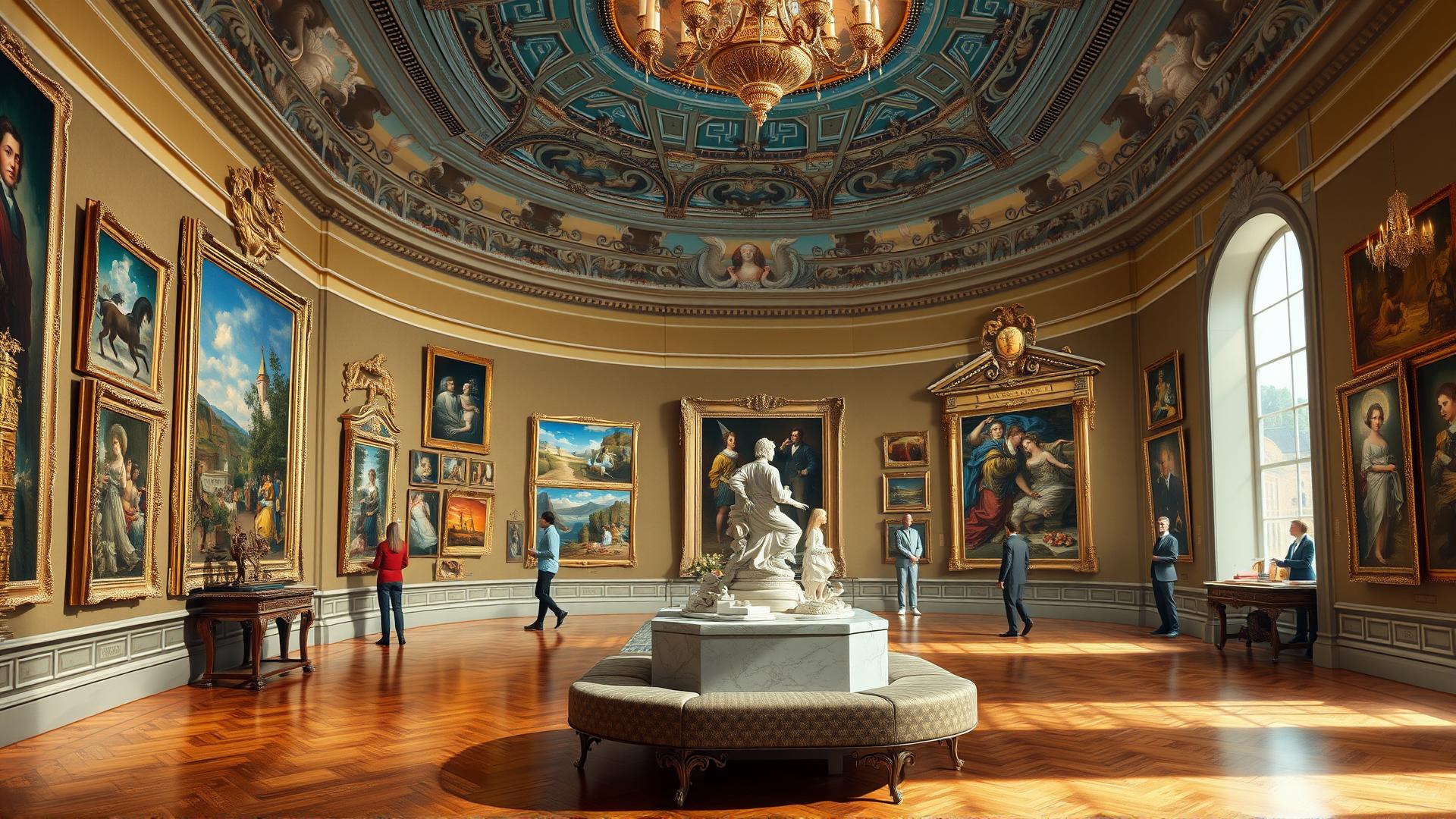
Reviving Classic Masterpieces With Oil Painting Reproductions
Introduction
Oil painting reproductions serve as a bridge between classic masterpieces and contemporary artistry, reintroducing timeless works into modern settings. This article delves into the history of oil painting, the techniques involved in creating reproductions, and the significance of these artworks in today’s culture. The practice of replicating famous pieces dates back centuries, allowing new generations to appreciate the richness of art without necessarily owning the originals. Through the detailed exploration of various reproduction styles and methods, we can understand how oil painting continues to inspire admiration and creativity.
Oil painting reproductions are not mere copies; they embody the essence of the originals while also reflecting the skills of the artists who recreate them. This article outlines the historical context of oil painting, assesses the challenges of reproducing classical works, and discusses the moral and legal considerations surrounding art reproduction. By examining these aspects, we invite readers to appreciate the ongoing relevance of oil painting reproductions in our artistic landscape.
Historical Context of Oil Painting
Oil painting, a significant medium in the art world, can trace its roots back to the early Renaissance period, primarily in Northern Europe. Its emergence marked a pivotal development in artistic expression, offering enhanced luminosity and a versatile texture that was absent in previous media like tempera or fresco. Artists like Jan van Eyck are often credited with perfecting the technique, showcasing the medium’s potential through meticulous detail and vibrant colors.
The evolution of oil painting continued through the centuries, with notable advancements made by masters such as Titian and Rembrandt. These artists peeled back layers of oil paint to create depth, allowing for a richness of color and form that energized their compositions. The introduction of new pigments, derived from minerals and organic materials, further expanded the artist’s palette, enabling greater creativity and innovation.
One of the most telling shifts in oil painting came during the Baroque period, where dramatic contrasts of light and shadow, known as chiaroscuro, became prominent. This technique, employed by artists such as Caravaggio, added emotional weight and a sense of realism, influencing generations of painters who sought to capture lifelike expressions and movement.
As art movements evolved through the 19th and 20th centuries, oil painting absorbed influences from Impressionism and Post-Impressionism. Artists like Claude Monet and Vincent van Gogh pushed the boundaries of this medium, employing loose brushwork and vibrant colors. This was a radical departure from the smooth, meticulous finishes of earlier works, illustrating how oil painting could continuously adapt to new ideas and cultural shifts.
In modern times, the significance of oil painting is not merely historical. The revival of classic masterpieces through reproduction fosters a renewed appreciation for these earlier works, allowing contemporary audiences to engage with the techniques and philosophies of past artists. Through reproductions, art serves not only as a snapshot of history but as a continuous dialogue between eras, underscoring the enduring legacy and relevance of oil painting. Such endeavors highlight how the past can inform the present, making art not just a reflection of its time but a living, breathing testament to human creativity and expression.
Techniques in Oil Painting Reproductions
Materials and Processes Employed in Reproduction
Creating oil painting reproductions involves a careful selection of materials and a meticulous process that mirrors traditional oil painting while embracing modern techniques. Artists who specialize in reproductions choose high-quality canvas, often cotton or linen, that closely resembles the surface used by the original master. This attention to detail enhances the authenticity of the final product and allows for a texture reminiscent of the original painting.
The choice of oil paints is equally critical. Artists typically select top-grade pigments known for their richness and lightfastness to ensure that colors remain vibrant over time. Many reproducing artists favor natural pigments derived from minerals and organic sources, echoing the palette choices of historical painters. These high-quality materials provide a depth of color and translucency that synthetic options often lack.
The process of layering paint is vital in achieving a true representation of the original work. Reproducing artists usually start with a thin underpainting, establishing the foundational colors and forms. This layer is often completed using a technique called “grisaille,” which employs shades of gray to define shapes before adding color. Over this, subsequent layers are applied, each building on the last to create complexity and luminosity, closely reflecting the original technique used by the master painter.
Traditional Techniques Enhanced by Modern Innovations
Reproducing artists often incorporate modern tools and methodologies that enhance traditional techniques. For instance, the use of glazing mediums allows for fine adjustments to color and depth, enabling artists to achieve effects akin to the original masterpiece. Glazing involves applying thin, transparent layers of paint, which can transform the appearance of underlying colors and enhance overall luminosity.
Artists may employ digital tools during the preparatory phase. High-resolution images of the original works serve as references for color matching and composition. However, the tactile process of layering paint remains a manual and skillful endeavor, preserving the essence of traditional oil painting. This blend of old and new fosters a revival of classic masterpieces, making art accessible to a broader audience and preserving significant works for future generations to admire.
Styles of Oil Painting Reproductions
Defining Reproduction Styles
Oil painting reproductions come in a variety of styles, each offering a unique perspective on classic masterpieces. The way a reproduction is categorized can significantly impact how it is perceived, understood, and valued. Among the most commonly recognized styles are ‘in the style of’, ‘after’, and ‘studio of’, each showcasing different degrees of authorship and creative interpretation.
‘In the style of’ reproductions indicate that the artist has emulated the techniques and aesthetic qualities of a renowned master. This approach often involves deep study of the original artwork and an attempt to capture its essence while allowing room for individual expression. For instance, a contemporary artist might create a piece that resembles Vincent van Gogh’s swirling skies and vibrant color palette, but the result stands alone as a new work, not merely a replica.
On the other hand, ‘after’ reproductions are typically more direct interpretations of the original artwork. This style suggests that the replica closely resembles the original in composition and technique, aiming to replicate its details and nuances as faithfully as possible. Collectors and art lovers often seek ‘after’ pieces because they provide a glimpse into the original’s legacy, although they lack the originality found in ‘in the style of’ works.
Studio of Reproductions
The ‘studio of’ category represents works that are produced in the same studio or environment as the original artist but may involve various artisans contributing to the final outcome. This approach recognizes the collaborative nature of art-making during certain historical periods, especially in large studios where multiple hands could participate in a painting’s completion. While these works can be attributed to the master’s creative environment, they may not always reflect the master’s personal touch as distinctly as the other styles do.
Understanding these distinctions is crucial for artists and collectors alike. Each style serves a purpose in preserving the legacy of classic masterpieces while also adapting them for contemporary audiences. By embracing these reproduction styles, the art world keeps the dialogue between past and present alive, encouraging appreciation for historical techniques while allowing modern interpretations to flourish.
Cultural Significance of Reproductions
Analyzing the Impact of Oil Painting Reproductions in Contemporary Society
Oil painting reproductions hold a unique and profound cultural significance in contemporary society. Throughout history, access to art has often been limited to the affluent, creating a divide between the elite and the general populace. However, with the advent of reproductions, particularly those that faithfully echo the techniques and aesthetics of masterworks, a new wave of democratization has emerged. These reproductions allow individuals from various socioeconomic backgrounds to appreciate and adopt classical masterpieces into their lives.
One of the key roles of oil painting reproductions is their ability to introduce classic art to a broader audience. Museums and galleries often possess originals that are either behind glass or kept in sealed environments, making them less accessible to the public. Conversely, reproductions break down these barriers, granting individuals the opportunity to experience and engage with iconic pieces in their own spaces. They serve as windows into the past, illuminating cultural narratives and artistic techniques while fostering a sense of connection with the historical context of the originals.
The act of reproducing oil paintings also influences cultural appreciation. As people acquire reproductions, they often delve into the stories behind the works and the artists themselves. This engagement can spark a deeper interest in art history and appreciation for the various styles that characterize different periods. Reproductions can become educational tools, prompting discussions about technique, symbolism, and the cultural movements that shaped the art world. They empower communities, enriching the collective understanding of art and its profound connection to society.
In education, oil painting reproductions play a pivotal role in the modern art market and individual expression. The accessibility of these works enables patrons to curate their spaces in ways that reflect their aesthetic preferences, making art an integral part of daily life rather than a distant luxury. They also inspire creativity, as individuals may feel encouraged to create their interpretations or experiment with techniques seen in the reproductions they admire.
Oil painting reproductions serve not just as imitations but as vessels of cultural significance, bridging historical timeframes and enabling artistic discourse. Through this act of revival, they democratize art, ensuring that the treasures from our past continue to resonate within contemporary society. These reproductions remind us of art’s enduring impact while fostering a rich communal appreciation for the masters and their legacies.
Ethical Considerations in Art Reproduction
The production of oil painting reproductions invites various ethical dilemmas that intertwine with issues of copyright and intellectual property rights. As artists strive to revive classic masterpieces, understanding the implications surrounding these reproductions becomes crucial. Many of the artworks that are targeted for reproduction are still protected under copyright laws, particularly those created within the last 70 years. This creates a conflict between the desire to reproduce and share art widely, and the legal guidelines that govern such actions.
When reproducing a piece of art, the creator must consider whether the original artwork is in the public domain or still protected by rights holders. Public domain artworks—those whose copyrights have expired—allow for reproductions without infringement concerns. However, recreating works that remain under copyright can lead to potential legal repercussions, including cease-and-desist orders or lawsuits from original artists or their estates.
The conversation around oil painting reproductions also raises questions about the authenticity and originality of artwork. While reproductions can provide access to the aesthetic and educational value of classic masterpieces, they may also blur the line between original and replica. In some instances, reproductions are labeled as such, but in others, they might be misrepresented as original works. This highlights the ethical responsibility of artists and publishers to ensure transparency in their reproductions and to honor the legacy of the original creators.
The implications of art reproduction extend into broader discussions of cultural heritage and ownership. When a classic masterpiece is reproduced, the context, meaning, and significance of the original work can shift. Cultural appropriation can come into play when artworks are reproduced without due recognition. It is essential for reproductions to not only honor the original artist, but to also consider the cultural narratives embedded within the artwork. This is particularly relevant in cases where the original works originate from marginalized or underrepresented communities.
In this evolving landscape, the role of oil painting reproductions continues to spark debate among artists, collectors, and legal experts. Ethical guidelines and practices must be established and communicated to navigate the complexities of art reproduction responsibly. Through thoughtful engagement with these issues, one can appreciate the beauty of classic masterpieces while fostering respect for the artistic and legal frameworks that govern them.
Contemporary Artists and Oil Painting Reproductions
Within contemporary art, a select group of artists dedicates themselves to the meticulous craft of oil painting reproductions. These artists not only hone their skills in replicating classic masterpieces but also breathe new life into these historical works. Their contributions to the field extend beyond mere copies; they create connections between the past and present, enriching our understanding of art while engaging a contemporary audience.
Reviving the Past Through Modern Techniques
Many contemporary artists specializing in oil painting reproductions adopt a range of modern techniques that amplify the original works’ emotional and visual narratives. For instance, artists such as Eric D. Meyer utilize traditional oil painting methods alongside contemporary approaches like layering and glazing. By doing so, they can replicate the texture and depth of the original pieces while injecting personal interpretations. This technique creates a dialogue between the artist’s vision and the silent whispers of the past that the masterpiece conveys.
Artists like Alex Misch take inspiration from the integration of contemporary aesthetics into classic formats. By re-contextualizing well-known works within modern cultural frameworks, they challenge viewers to reconsider the relevance of historical art in today’s society. Their reproductions not only honor the originals but also invite fresh interpretations that resonate with contemporary viewers, leading to a broader appreciation of art and its continued evolution.
Cultural Impact: Bridging Generations
The cultural implications of these reproductions are significant. They serve as a vehicle for education, allowing new generations to engage with masterpieces that might otherwise remain inaccessible due to geographical or economic constraints. Organizations like Art Reproductions for Education leverage the expertise of contemporary artists to reproduce high-quality oil paintings for academic purposes, fostering an appreciation for classical art in schools and public institutions.
These reproductions play a pivotal role in democratizing art. By making classic works available to a broader audience, contemporary artists not only revive the masterpieces but also create an opportunity for dialogue about artistic expression, technique, and cultural history. This bridging of generations ensures that the legacy of classic art continues to thrive, influencing future artists and cultivating an inclusive art community.
Future of Oil Painting Reproductions
Imagining the Evolution of Oil Painting Reproductions
Oil painting reproductions is on the brink of transformation, as digital advancements continue to permeate the arts. Traditionally, oil painting reproductions have involved meticulous hand-painted techniques that sought to emulate classic masterpieces with authenticity and detail. As technology progresses, several key trends may shape the future landscape of this artistry.
One of the most promising developments lies in the integration of augmented reality (AR) and virtual reality (VR) technologies. Artists may leverage these tools to create immersive experiences that allow viewers to engage with classic masterpieces in revolutionary ways. Imagine walking through a virtual gallery where one can witness brush strokes come to life or even interact with paintings to learn about their historical context, all while inspecting oil painting reproductions up close. This merging of physical and digital environments could redefine how audiences appreciate and connect with classic art.
The use of artificial intelligence in the artistic process may become increasingly prominent. AI tools can analyze existing works and generate new interpretations or reproductions that maintain the original’s essence while introducing contemporary elements. This synergy between human creativity and machine learning could lead to an unprecedented range of stylistic variations in oil painting reproductions, enabling artists to explore uncharted territories while simultaneously paying homage to classic techniques.
Sustainability is another critical aspect shaping future trends. As art collectors and artists become more conscious of environmental impacts, there is potential for the adoption of eco-friendly materials and practices in reproduction efforts. Non-toxic paints and sustainable canvases could gain popularity, allowing artists to embrace traditional methods while being more environmentally responsible.
Digital platforms are set to revolutionize the distribution and accessibility of oil painting reproductions. Online galleries and marketplaces make it possible for artists to connect with a global audience, transcending geographical limitations. This democratization of art could foster a diverse array of voices within the reproduction community, inviting a broader spectrum of interpretations and styles.
Cultural Impacts and Future Dialogues
As oil painting reproductions evolve alongside technological advancements, they will undoubtedly influence cultural dialogues around art. Artists and viewers alike may grapple with notions of authenticity, ownership, and the value of human touch in the painting process. The intersection of tradition and modernity will likely spark debates about what constitutes ‘art’ in a world increasingly defined by technology.
The future of oil painting reproductions is poised for not only artistic innovation but also an enriched cultural landscape, where classic masterpieces are revived through the lens of contemporary methods and digital influences.
Conclusions
Oil painting reproductions represent a unique blend of historical reverence and modern creativity. They provide a means for individuals to experience and enjoy the beauty of classical art within their own spaces. The techniques and philosophies behind creating these reproductions ensure that the original masterpieces are honored, while also allowing artists to reinterpret and express their artistic vision. As discussed, the exploration of reproduction styles from various periods showcases the evolving relationship between original artworks and their counterparts.
As we venture into an era where art is increasingly accessible, oil painting reproductions will continue to play a vital role in cultivating appreciation for classical art forms. They challenge us to reconsider the boundaries of authenticity and value in art, reminding us that creativity can take many forms. Ultimately, oil painting reproductions offer a beautiful opportunity to revive and celebrate the iconic works that have shaped our cultural heritage.


